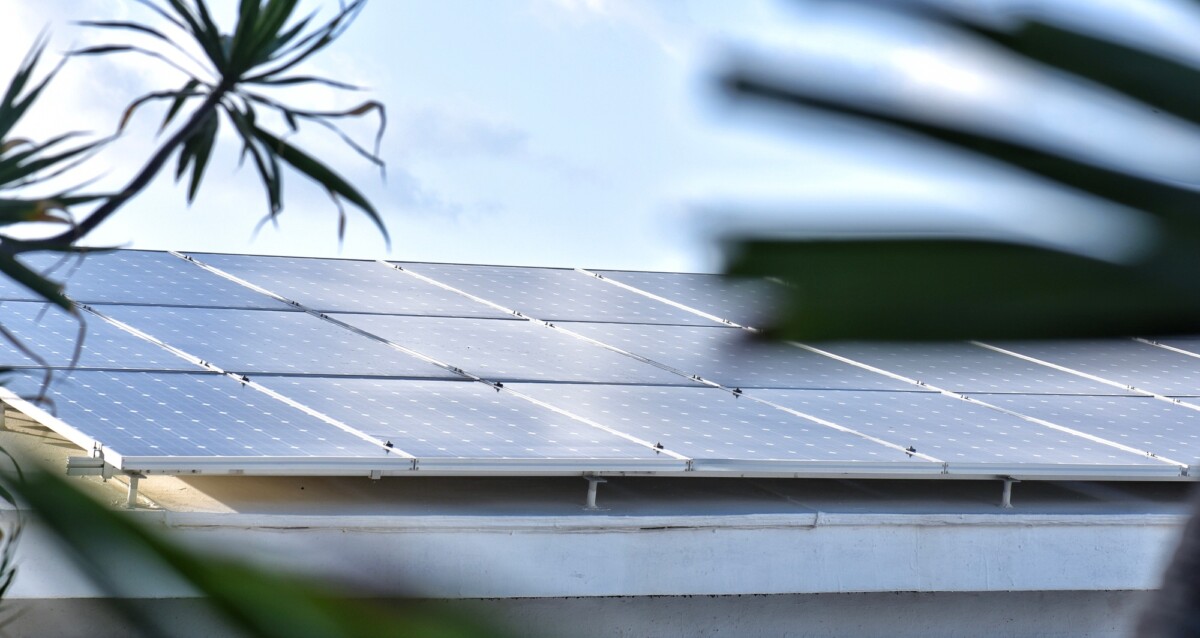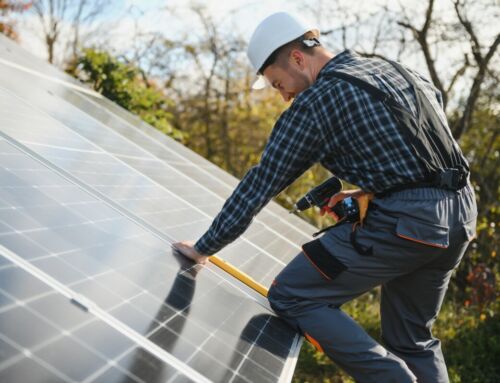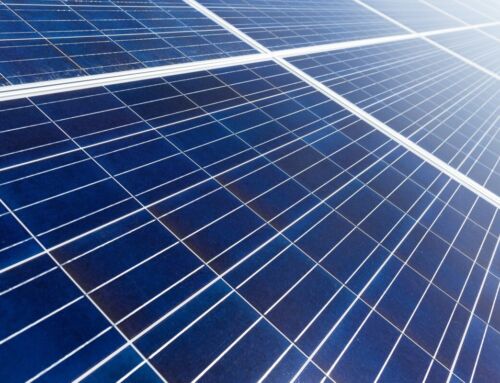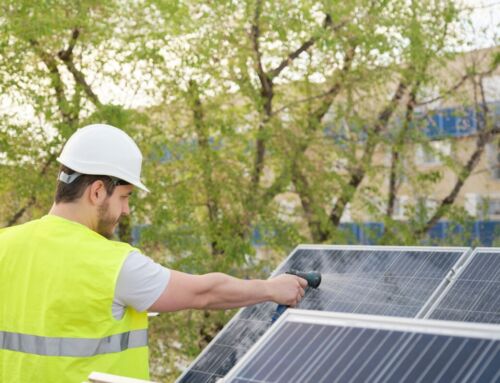Understanding the Initial Investment: What You Need to Know
Key Factors Influencing Payback Time
Several elements affect how long it takes for solar panels to pay for themselves:
- Installation Costs: The initial investment varies based on system size, location, and installer rates.
- Energy Savings: The more electricity your system generates, the quicker you’ll see savings on your utility bills.
- Incentives and Rebates: Federal and state incentives can significantly reduce upfront costs, shortening the payback period.
Typical Payback Period
On average, solar panels take between 6 to 10 years to pay for themselves. This timeframe depends on your local electricity rates, the amount of sunlight your area receives, and the efficiency of your solar system. With rising energy costs, many homeowners find their investment pays off even sooner.
Read Also: Solar Energy: Cut Electricity Bills Now
Maximizing Your Investment
To ensure a quicker return on investment, consider these tips:
- Optimize System Size: Tailor your solar panel system to match your energy needs.
- Regular Maintenance: Keep panels clean and free from obstructions to maintain efficiency.
- Monitor Performance: Use monitoring tools to track energy production and identify any issues early.
By understanding these factors, you can better estimate how long it will take for your solar panels to pay for themselves and enjoy the financial and environmental benefits they offer.
Factors Influencing Solar Panel Payback Time
Initial Costs and Incentives
The upfront cost of solar panels is a significant factor in determining payback time. However, federal and state incentives can substantially reduce these costs. Tax credits, rebates, and other financial incentives can shorten the time it takes for solar panels to pay for themselves.
Energy Consumption and Savings
Your household’s energy consumption plays a crucial role. The more energy you use, the more you save by generating your own electricity. This increased savings can lead to a quicker payback period.
- High Energy Use: Faster payback due to greater savings.
- Low Energy Use: Longer payback period as savings accumulate more slowly.
Location and Sunlight Exposure
Geographical location affects sunlight exposure, impacting energy production. Areas with more sunlight will see faster payback times as panels generate more electricity.
- Sunny Locations: Quicker payback due to higher energy production.
- Cloudy Regions: Slower payback as energy production is reduced.
Understanding these factors can help you better estimate how long it will take for your solar panels to pay for themselves, ensuring you make a wise investment in renewable energy. 
Thinking about solar energy? See how it can lower your bills and elevate your home’s efficiency. Get Your Free Estimate at NewSolar Quotes
How Long Do Solar Panels Take To Pay For Themselves in Different Climates?
Are you considering investing in solar panels but wondering about the return on investment? You’re not alone. Many homeowners ask, “How long do solar panels take to pay for themselves?” The answer isn’t one-size-fits-all, as it varies depending on several factors, including your local climate. Let’s explore how different climates impact the payback period for solar panels.
Climate Impact on Solar Payback
The amount of sunlight your area receives directly affects how quickly your solar panels will pay for themselves. In sunny climates like Arizona or California, solar panels can pay off in as little as 5 to 7 years. However, in cloudier regions like the Pacific Northwest, the payback period might extend to 10 years or more.
- Sunny Climates:
- Faster payback due to high solar energy production.
- Reduced electricity bills year-round.
- Cloudy Climates:
- Longer payback period due to less sunlight.
- Seasonal variations in energy production.
Other Factors to Consider
While climate plays a significant role, other factors also influence the payback period. These include the cost of electricity in your area, available government incentives, and the initial cost of the solar panel system. By considering these elements, you can better estimate how long it will take for your solar panels to pay for themselves.
Maximizing Efficiency: Tips to Speed Up Your Solar Payback Period
Are you curious about how long do solar panels take to pay for themselves? You’re not alone. Many homeowners are eager to see returns on their solar investment. The good news is that with the right strategies, you can significantly reduce the payback period and start enjoying savings sooner. Understanding the Payback Period The payback period for solar panels typically ranges from 6 to 10 years, depending on various factors such as location, energy consumption, and system size. However, by optimizing certain elements, you can accelerate this timeline. Optimize Your Energy Usage
- Monitor Consumption: Regularly check your energy usage to identify patterns and reduce wastage.
- Energy-Efficient Appliances: Invest in appliances that consume less power, further lowering your bills.
Leverage Incentives and Rebates Many regions offer incentives and rebates for solar installations. These can significantly reduce upfront costs, shortening the payback period. Make sure to research and apply for all available programs. Regular Maintenance Keeping your solar panels clean and well-maintained ensures they operate at peak efficiency, maximizing energy production and savings. Schedule regular inspections to catch any issues early. By implementing these strategies, you can effectively reduce the time it takes for your solar panels to pay for themselves, allowing you to enjoy the financial and environmental benefits sooner.
The Role of Government Incentives in Reducing Payback Time
Attention: Have you ever wondered, How long do solar panels take to pay for themselves? It’s a common question for homeowners considering the switch to solar energy. Problem: The initial investment can be daunting, making the payback period a crucial factor in the decision-making process. Promise: Fortunately, government incentives can significantly reduce this payback time, making solar panels a more attractive option.
Understanding Government Incentives
Government incentives play a pivotal role in shortening the time it takes for solar panels to pay for themselves. These incentives come in various forms, such as tax credits, rebates, and grants, which can substantially lower the upfront costs of installation. By reducing these initial expenses, homeowners can see a quicker return on their investment.
Types of Incentives
- Federal Tax Credits: The federal government offers tax credits that can cover a significant portion of the installation costs.
- State and Local Rebates: Many states and local governments provide additional rebates, further decreasing the financial burden.
- Performance-Based Incentives: Some regions offer incentives based on the amount of energy your solar panels produce, rewarding efficient systems.
Impact on Payback Time
With these incentives, the question of how long do solar panels take to pay for themselves becomes less daunting. Typically, without incentives, the payback period might range from 10 to 20 years. However, with the right combination of federal and state incentives, this period can be reduced to as little as 5 to 7 years, depending on your location and energy consumption. In conclusion, government incentives not only make solar energy more accessible but also accelerate the financial benefits, making the transition to solar power a wise and sustainable choice.
Comparing Residential and Commercial Solar Panel Payback Periods
Curious about how long do solar panels take to pay for themselves? You’re not alone. Many homeowners and business owners are eager to understand the financial benefits of solar energy. The promise of reduced energy bills and a smaller carbon footprint is enticing, but the payback period can vary significantly between residential and commercial installations.
Residential Solar Panel Payback
For homeowners, the payback period for solar panels typically ranges from 6 to 10 years. This timeframe depends on several factors, including the size of the installation, local energy costs, and available incentives. Homeowners can benefit from federal tax credits, state rebates, and net metering programs, which can significantly reduce the initial investment and shorten the payback period.
Commercial Solar Panel Payback
Commercial solar installations often have a shorter payback period, usually between 4 to 7 years. Businesses can take advantage of larger-scale installations and economies of scale, which reduce the cost per watt. Additionally, commercial entities often qualify for more substantial tax incentives and accelerated depreciation benefits, further enhancing the financial appeal of solar energy.
- Factors Influencing Payback Periods:
- Installation Costs: Larger systems may have higher upfront costs but lower per-watt expenses.
- Energy Consumption: Higher energy usage can lead to faster savings.
- Incentives and Rebates: Availability and size of incentives can drastically affect payback times.
Understanding how long do solar panels take to pay for themselves is crucial for making an informed decision. Whether for a home or a business, the investment in solar energy can lead to significant long-term savings and environmental benefits.
Real-Life Examples: How Quickly Do Solar Panels Pay for Themselves?
Factors Influencing Payback Time
The time it takes for solar panels to pay for themselves can vary based on several factors:
- Location: Sunlight exposure significantly impacts energy production.
- Energy Costs: Higher electricity rates can lead to quicker savings.
- System Size: Larger systems may have a faster payback period due to increased energy generation.
Real-Life Case Studies
- California Homeowners: In sunny California, homeowners often see a payback period of 5-7 years due to high electricity costs and abundant sunlight.
- Midwest Residents: In the Midwest, where sunlight is less intense, the payback period might extend to 8-10 years, but incentives and rebates can shorten this timeline.
Maximizing Your Investment
To ensure your solar panels pay for themselves as quickly as possible:
- Utilize Incentives: Take advantage of federal and state tax credits.
- Optimize Usage: Use energy-efficient appliances to maximize savings.
- Regular Maintenance: Keep panels clean and well-maintained for optimal performance.
In conclusion, understanding how long solar panels take to pay for themselves involves considering location, energy costs, and system size. By examining real-life examples, you can better gauge the potential return on investment and make informed decisions about solar energy.
How NewSolarQuotes Can Help You Calculate Your Solar Payback Time
Are you curious about how long do solar panels take to pay for themselves? You’re not alone. Many homeowners are eager to understand the financial benefits of solar energy. The good news is that solar panels can indeed pay for themselves, often within a few years, thanks to reduced electricity bills and potential tax incentives. At NewSolarQuotes, we promise to simplify this calculation for you, ensuring you make an informed decision.
Understanding Solar Payback Time
The solar payback time is the period it takes for the savings from your solar panels to equal the initial investment cost. This timeframe can vary based on several factors:
- Installation Costs: The upfront cost of solar panels and installation can significantly impact payback time.
- Energy Savings: The amount you save on electricity bills each month.
- Incentives and Rebates: Government incentives can shorten the payback period.
Why Choose NewSolarQuotes?
At NewSolarQuotes, we provide tools and resources to help you calculate your solar payback time accurately. Our user-friendly calculators consider all relevant factors, offering a personalized estimate. Plus, our expert team is always ready to assist you with any questions, ensuring you have all the information you need to make the best decision for your home.
FAQ
-
How do solar panels pay for themselves?
Through energy savings, tax credits, and incentives, reducing electricity costs. -
How long does it take for solar panels to pay off?
Most solar systems pay off in 5–10 years, depending on location and energy use. -
Do solar panels pay off in cloudy areas?
Yes, but payback time is longer due to lower sunlight exposure. -
Can I sell excess solar energy for payment?
Yes, many states offer net metering programs that pay for excess power. -
Are there government incentives that help solar pay for itself?
Yes, federal and state solar tax credits reduce upfront costs.
Switch to solar and start saving now! Don’t miss out on a cleaner, cost-effective energy solution. Schedule Your Free Consultation at NewSolar Quotes
Discover more ways to save with solar! Visit New Solar Quote and see the potential for your home.





